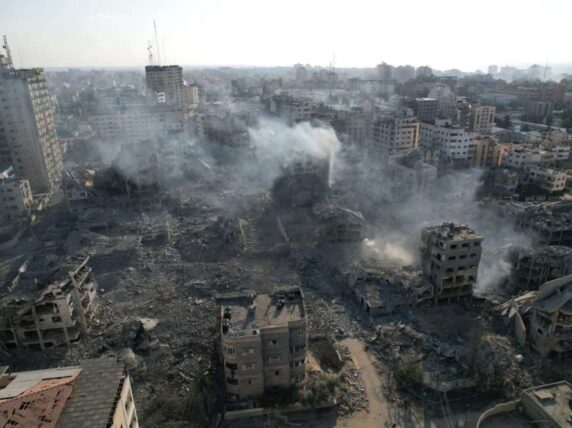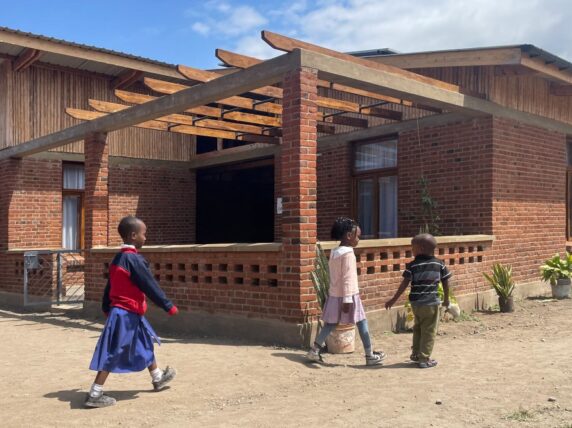The FCDO’s Annual Report: another blow to transparency and more pressure on ODA budgets
Last month, the FCDO published its 2021-22 Annual Report and Accounts.
The accounts were most remarkable for what they didn’t contain. The report contained no information about the department’s ODA future budget, even for the current year. This is another disappointing blow to transparency and one of many indications that big changes to the current ODA allocations are likely on their way. But with no information provided, the sector and the communities we are supposed to work withare left yet again in the dark about these crucial decisions.
Another transparency failure
The report was meant to contain forward-looking budgets for the current financial year (2022-23) and for the entire spending review. This information has previously been provided in these reports, but despite the foreign secretary’s commitment to continue to do so when she appeared before the International Development Select Committee (IDC) in May, it was not provided. Now over four months into the financial year, there is still no consolidated public data on planned ODA spending. We also don’t know what ODA allocations have been made for other departments.
This omission is extremely concerning and creates a lot of uncertainty more than a quarter of the way into the financial year, despite the report stating that the government “remains committed to transparency and will provide updates to spending plans in due course”.
The report also states that “the FCDO and other ODA spending departments will need to revisit [ODA] allocations” due to the government’s support to Ukraine and those fleeing Ukraine and the Afghan resettlement programme. Of course, allocations may change over the course of the year, but transparency is still needed for current plans and ongoing changes to budgets. When the Department for International Development (DFID) published the 2019-20 annual reports and accounts, they provided the forward-looking budget with a proviso that they may change due to Covid-19. The FCDO could have done the same thing.. The fact that there may be significant changes to ODA allocations soon makes transparency more vital, not less.
What we learned
The annual report does contain retrospective information, which confirms much of what we already know about the FCDO’s approach to development in 2022, including the strategic priorities and the reduced ODA budget target, which was confirmed by a statement to parliament that the UK had missed the 0.7% ODA target for the first time since 2013.
The narrative section focuses on many of the FCDO’s stated priority areas, including girls’ education, climate change and global health. As we’ve highlighted elsewhere, focusing on these problems in isolation undermines overall progress and adds up to a weak strategic approach. It is positive to see the Sustainable Development Goals (SDGs) featured more prominently, as advocated for by our recent report on the SDGs. However, the report also flagged the need for a re-centralisation of the SDGs across the FCDO’s strategy as a whole, which we hope to see, rather than a retrofit to the existing approach.
Subscribe to our newsletter
Our weekly email newsletter, Network News, is an indispensable weekly digest of the latest updates on funding, jobs, resources, news and learning opportunities in the international development sector.
Get Network NewsWe got some clarity on how the FCDO’s spending differed from their planned budget for the past financial year. The budget for 2021-22 had aimed to hit the lower 0.5% GNI target. Overall, the FCDO reported £7.4bn of ODA in 2021-22 through these reports, around £138m less than planned when the 2021-22 budgets were published in the previous year’s annual reports and accounts.
The biggest geographical reductions in absolute terms between the planned budget and actual spending occurred in Pakistan (which received £16.7m or 17% less than planned) and Overseas Territories (which received £10.8m or 14% less than planned). Other countries that received significant percentage reductions between planned budget and actual spending include Central Asia (62% reduction), Egypt (23% reduction), Brazil (22%) and Libya (20%). Unsurprisingly there were significant increases to Afghanistan (which received £140.5m more than planned,(an increase of 97%), and Ukraine (which went from £0 in 2020/21 to £103.4m in 2021/22). Venezuela also received £201m or 67% more than planned.
In line with their stated priorities, the Children, Youth and Education department, rebranded as the Girls’ Education department, received a 56% increase in funding compared with planned budgets. The public finance and tax department received £19.7m more than planned, an increase of 219%. The biggest increase, however, was to the budget for growth and resilience programming, which increased by £285.3 million or 759%, suggesting a significant change to that portfolio.
More changes to come – what we should be looking out for
The Taliban’s takeover of Afghanistan, the war in Ukraine, the worsening global food crisis along with pre-existing, protracted crises are overwhelming the UK’s capacity to respond. The generous and good decision to welcome Ukrainian refugees in significant numbers is putting additional strain on European ODA budgets, including the UK’s. All in-country refugee costs can be claimed as ODA for the first 12 months of hosting. These costs have been increasing over the past few years.
This year, preliminary calculations based on partial information are suggesting in-country refugee costs could reach anywhere from £2-3 billion. With the 0.5% GNI cap in place, that could amount to around a quarter of the UK’s entire ODA budget – the same amount planned for the entire humanitarian response budget over the next three years. Sweden and Norway initially made significant cuts to their ODA programmes to fund in-country support to refugees from Ukraine. Both have at least partially reversed the decision.
The FCDO is promising to publish ODA budgets in the autumn, which will tell us how the FCDO proposes to meet competing demands. But it is hard to see how yet another round of ODA budget cuts can be avoided.
This context of ongoing crises is not going away. As the FCDO works out what this means for its ODA budget, it should do two things: first, it should immediately return to good transparency practices, sharing regularly and clearly all forward-looking budgets and having open conversations with the experts in the sector about the decisions it is facing. Second, it should recognise that cramming all ODA under a 0.5% ceiling cannot work when faced with unexpected crises of the scale we are facing now and that a new approach to the GNI target is required, including a return to 0.7% as soon as possible.
Category
News & Views



